Shumpei Inoue
Towards Safer Operations: An Expert-involved Dataset of High-Pressure Gas Incidents for Preventing Future Failures
Oct 23, 2023Abstract:This paper introduces a new IncidentAI dataset for safety prevention. Different from prior corpora that usually contain a single task, our dataset comprises three tasks: named entity recognition, cause-effect extraction, and information retrieval. The dataset is annotated by domain experts who have at least six years of practical experience as high-pressure gas conservation managers. We validate the contribution of the dataset in the scenario of safety prevention. Preliminary results on the three tasks show that NLP techniques are beneficial for analyzing incident reports to prevent future failures. The dataset facilitates future research in NLP and incident management communities. The access to the dataset is also provided (the IncidentAI dataset is available at: https://github.com/Cinnamon/incident-ai-dataset).
Meeting Decision Tracker: Making Meeting Minutes with De-Contextualized Utterances
Oct 20, 2022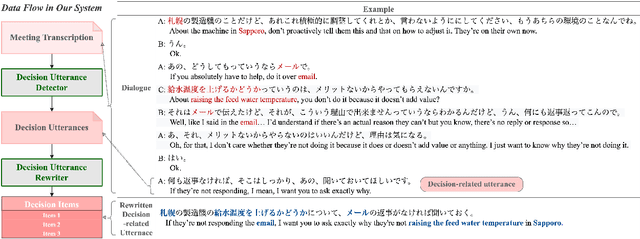
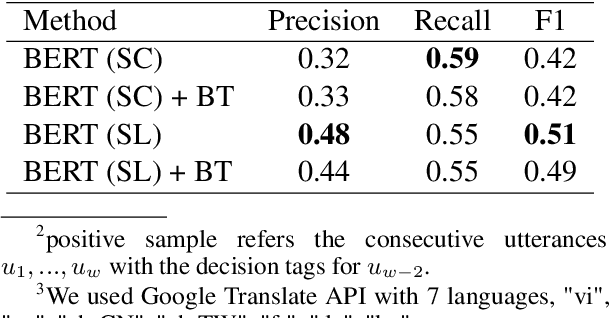

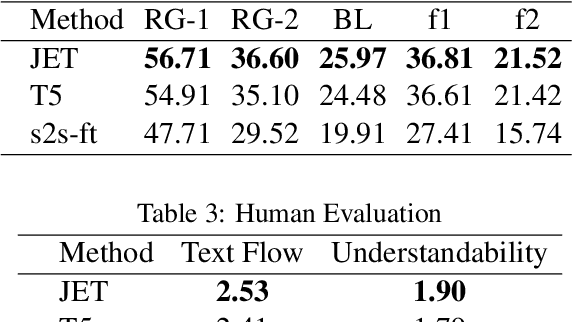
Abstract:Meetings are a universal process to make decisions in business and project collaboration. The capability to automatically itemize the decisions in daily meetings allows for extensive tracking of past discussions. To that end, we developed Meeting Decision Tracker, a prototype system to construct decision items comprising decision utterance detector (DUD) and decision utterance rewriter (DUR). We show that DUR makes a sizable contribution to improving the user experience by dealing with utterance collapse in natural conversation. An introduction video of our system is also available at https://youtu.be/TG1pJJo0Iqo.
Enhance Incomplete Utterance Restoration by Joint Learning Token Extraction and Text Generation
Apr 08, 2022
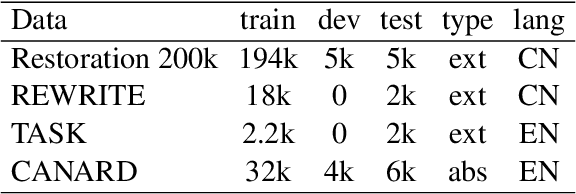
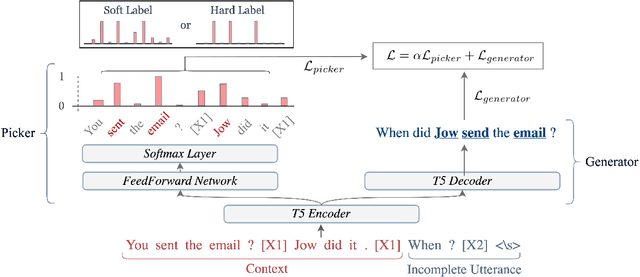

Abstract:This paper introduces a model for incomplete utterance restoration (IUR). Different from prior studies that only work on extraction or abstraction datasets, we design a simple but effective model, working for both scenarios of IUR. Our design simulates the nature of IUR, where omitted tokens from the context contribute to restoration. From this, we construct a Picker that identifies the omitted tokens. To support the picker, we design two label creation methods (soft and hard labels), which can work in cases of no annotation of the omitted tokens. The restoration is done by using a Generator with the help of the Picker on joint learning. Promising results on four benchmark datasets in extraction and abstraction scenarios show that our model is better than the pretrained T5 and non-generative language model methods in both rich and limited training data settings. The code will be also available.
 Add to Chrome
Add to Chrome Add to Firefox
Add to Firefox Add to Edge
Add to Edge